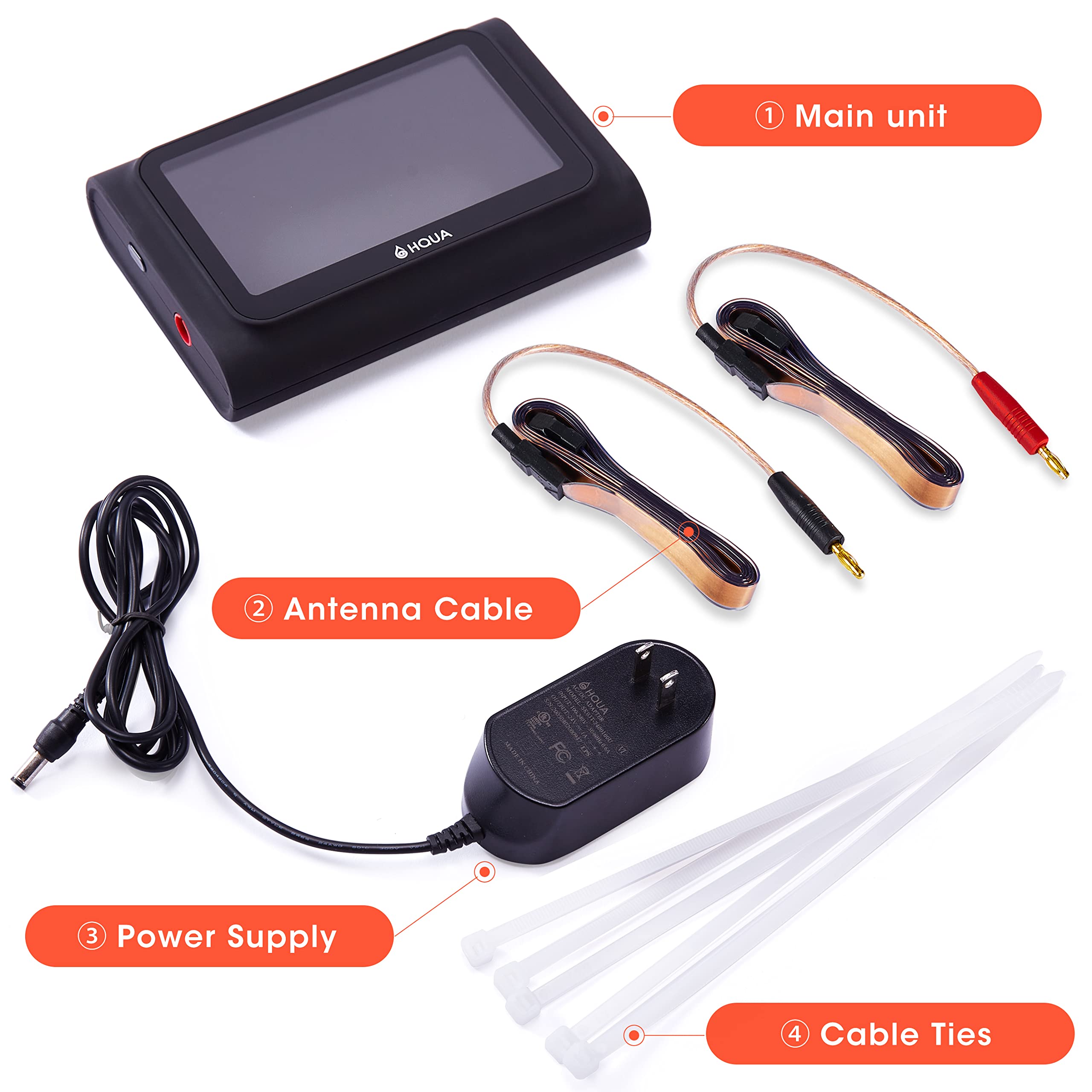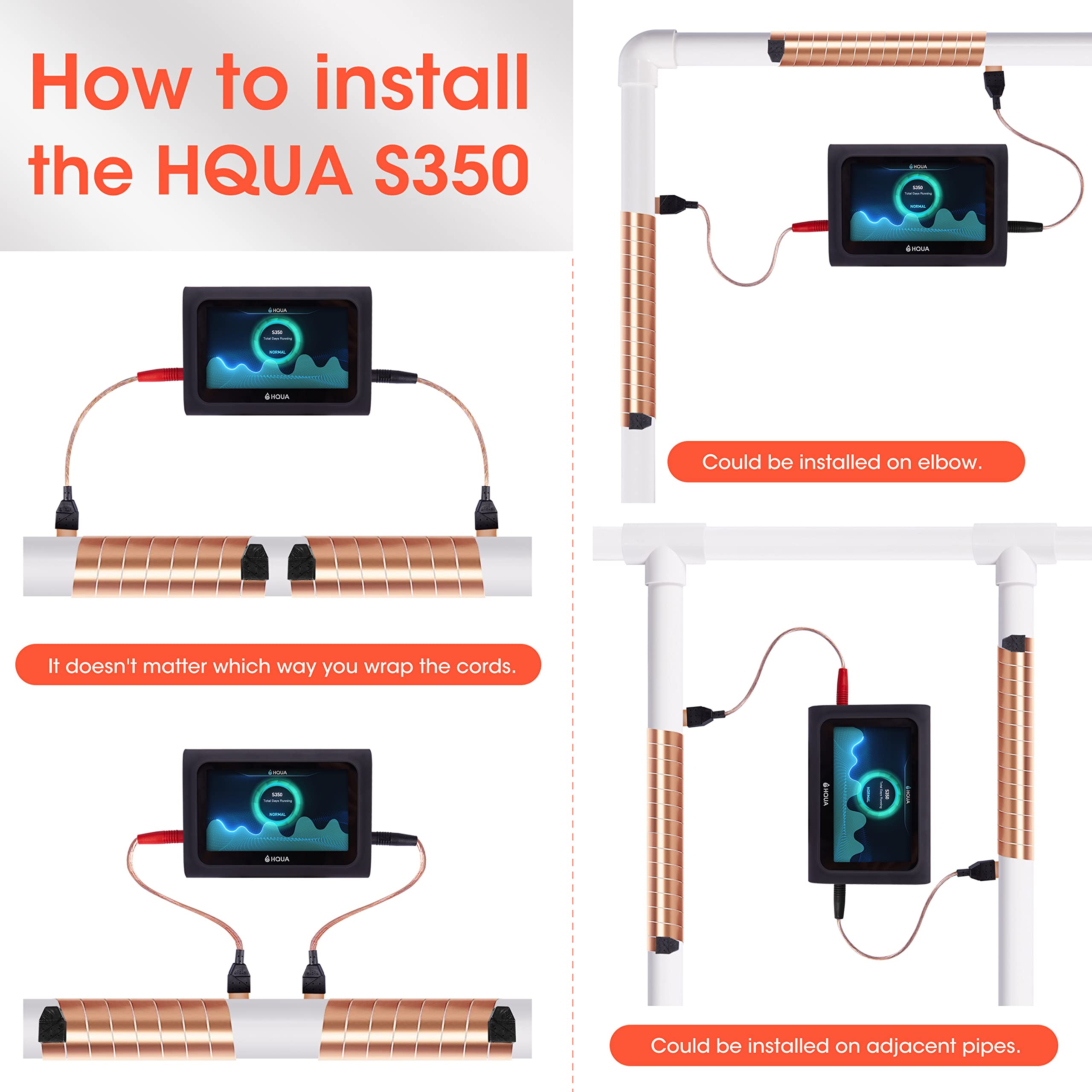








HQUA S350 Whole House Electronic Water Descaler, Alternative Water Softener, Salt Free, Limescale and Rust Removal and Prevention System
Details
- BrandHQUA
- Product Dimensions5.2"L x 3.6"W
- Package InformationBottle
- Installation TypeUnder Sink
- Item Weight1.13 Kilograms
- Model NameHQUA S350
Description
💧 Transform your home water—soft, clean, and hassle-free!
- DURABLE SAFE - Crafted from non-toxic ABS plastic for long-lasting, worry-free use.
- EFFORTLESS SETUP - Plug-and-play design fits seamlessly under your sink or in the basement.
- ECO FRIENDLY POWER - Consumes just 2 watts, saving energy while protecting your pipes.
- SALT FREE SOFTENING - Enjoy limescale-free water without harmful salts or chemicals.
- PORTABLE LIGHTWEIGHT - At just 2.48 lbs, move it easily or take it with you when you relocate.
The HQUA S350 is a compact, salt-free electronic water descaler that prevents limescale and rust buildup throughout your entire home. Operating at just 2 watts and made from durable ABS plastic, it installs easily under sinks or in basements, providing a safe, eco-friendly, and low-maintenance alternative to traditional water softeners.
Specifications
| Manufacturer | HQUA |
| Part Number | S350 |
| Item Weight | 2.48 pounds |
| Product Dimensions | 5.2 x 3.6 x 1.2 inches |
| Item model number | S350 |
| Is Discontinued By Manufacturer | No |
| Color | Black |
| Material | Acrylonitrile Butadiene Styrene |
| Pattern | HQUA-S350 |
| Thickness | 1 Inches |
| Voltage | 110 Volts |
| Wattage | 2 Watt-hours |
| Installation Method | Under Sink |
| Item Package Quantity | 1 |
| Included Components | Electronic descaler unit, Cable bands, Mounting hardware, Instruction manual |
| Batteries Included? | No |
| Batteries Required? | No |
Reviews
S**N
It Works! - Fun DIY Project - Definitely Worth a Try.
Update 2/8/21: The SS tub in our dishwasher is sparkling once again after the first use (was clouded with white layer of lime or soap residue). My wife notices improved lathering and skin feel after her shower. Laundry air dries to a softer feel. I am very happy so far- will update from time to time.Local water is relatively 'hard' and we didn't want to commit to a traditional water softener for the obvious reasons being cost, hogging up space (we have no basement), maintenance, drinking water taste + removing healthy minerals, and the nuisance of salt. After doing some research, I decided to give the HQUA a try for its decent reviews and the copper tape seems to be an improvement over the simple bell wire used on some other competing descalers. It arrived well-packaged and with a nice booklet. To be honest, $150 is a small gamble vs. thousand$ on a salt water softener. What's to lose?Planning the installation was the hardest job due to water inlet and figuring out the plumbing; the place I chose was not optimum but the only option in a loop inside the water meter. Actual installation took about an hour because I wanted to be meticulous. The hardest part was running power to the unit since no power was available in the closet where street water enters the house. I was careful to do the wraps in opposing fields (instructions say this wouldn't be an issue but I wanted to give best practice if it would make a difference). Also our inlet pipe is copper (instructions suggest plastic is best).From the first time I washed my hands, I could see and feel improvement in the lather and rinse. Later in the afternoon I took a shower and was pleasantly surprised at the improvement- both in suds, skin feel after rinsing, and my hair after it dried (more fluffy). Note: The instructions suggest it takes time to feel the benefits, however the fact that we have a TANKLESS hot water heater and no summer/winter boiler system for heat may have made the effect more immediate. Due to this, the 'descaled' water turns over faster in my theory without 'sitting' in pipes or the tank since it seems the effect diminishes over time as the molecules 'decouple'. We wouldn't have this issue in our home.So far I am totally pleased: Wife is showering today (I am waiting for her objective comments) + we haven't done any laundry or run the dishwasher yet. I will report back periodically. But I can tell you for our home, this thing is a home run so far.Objectively every situation is unique: The hardness of our local water may be within a range that is more easy to descale (I tried to find a hardness spec from the local Water Authority to no avail . Tankless hot water means less comingling. When I carefully digested the negative reviews, it occurs to me (since I had a hard time figuring out the plumbing) user error could be one of the reasons for less-than-optimal results, i.e. not locating the inlet for all the water; not wrapping coils to allow space between them or tight enough; comingled fresh/descaled water; or the local water itself. CONCLUSION: Seems to work great for us!
J**N
Installation simple, except . . .
****Update****I took two glasses of water, filled one before installation and one two days after. After two days of sitting, the 1st glass of water drawn before installation had noticeable precipitates of Calcium Carbonate (see picture). The 2nd glass of water drawn two days after installation and two days after sitting, had very little precipitate and no "clumps" of CaCO3 crystals (see other picture). The bottom line: THE PRODUCT SEEMS TO WORK on our 25 GPG well water. If the manufacturer would modify their installation method for wall attachment (see below), I would change the rating to five stars.***Original Post***The product arrived in less than 24 hours (congrats, Amazon) in an artful and well engineered box. It was so well packaged, with custom foam cushioning, that it was somewhat difficult to remove. Installation required about 30 minutes to wrap the copper bands around the pipe and use the supplied double-sided tape to stick the unit to the wall (Picture 1). As one might expect, double sided tape is inappropriate for concrete walls and yielded in about 8 minutes, allowing the unit to drop and dangle from the connecting wires. I am not sure what kind of walls the designers had in mind for likely installation, but in the U.S. it is highly likely to be poured concrete or concrete block. The double sided tape will not stick to these surfaces. It might possibly work with clean drywall, but the likely point of installation would be a basement in many/most parts of the U.S. (anywhere the ground freezes in the winter).Instead of the recommended wall mount, I screwed the supplied cable tie brackets (that were intended for the pipe mount option) to the wall with masonry screws and clamped the unit between them with cable ties (Picture 3). I believe this approach to be stable and durable.The system appears to be well constructed and I prefer the flat band pipe conductors to the more common cables, as it supplies a greater surface area per length of pipe compared to the insulated wire design of other systems. This approach should improve the electric field strength within the pipe. I am conducting a test of rate of precipitation of CaCO3 before and after installation. I will update this review, when I am able to evaluate efficacy.
Common Questions
Trustpilot
1 month ago
2 months ago
